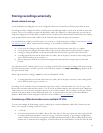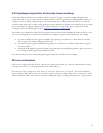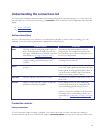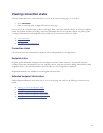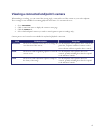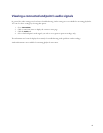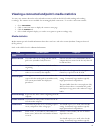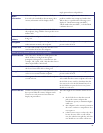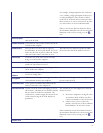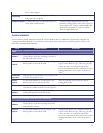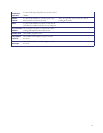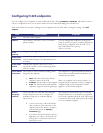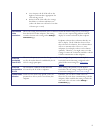
50
imply potential network problems.
Media
information
If the time stamps or marker bits (or both) are
detected to be unreliable in the incoming video
stream, information will be displayed here.
This field is not displayed when there is no
problem with the time stamps and marker bits.
Where there is a problem the following text is
displayed: "Media timestamps unreliable",
"Media marker bits unreliable", or both if both
conditions detected.
Transmit stream
The audio codec being sent from the IP VCR to
the endpoint, along with the chosen packet size in
milliseconds.
Transmit
address
The IP address and port to which the media is
being sent.
Encryption
Whether or not encryption is being used on the
audio transmit stream by this endpoint.
This field will only appear if the encryption key is
present on the IP VCR.
Packets sent
A count of the number of packets that have been
sent from the IP VCR to the endpoint.
Video (primary channel and H.239 shown separately)
Receive stream
The codec in use and the size of the picture that
the IP VCR is receiving from the specific
participant. If the picture is a standard size (for
example, CIF, QCIF, 4CIF, SIF) then this name is
shown in parentheses afterwards.
Receive address
The IP address and port (<IP address>:<port>) of
the device from which video is being sent
Encryption
Whether or not encryption is being used on the
video receive stream from this endpoint.
This field will only appear if the encryption key is
present on the IP VCR.
Channel bit rate
The negotiated bit rate available for the endpoint
to send video in.
This value represents the maximum amount of
video traffic that the remote endpoint will send to
the IP VCR. It may send less data than this (if it
does not need to use the full channel bit rate or
the IP VCR has requested a lower rate), but it
should not send more.
Receive bit rate
The bit rate (in bits per second) that the IP VCR
has requested that the remote endpoint sends.
The most-recently measured actual bit rate
displays in parentheses.
This value might be less than the Channel bit rate
if:
• the IP VCR detects that the network
path to the remote endpoint has
insufficient capacity to maintain a higher
traffic rate
• that endpoint's video stream's position in
the active conference compositions does
not require it
• it has been necessary to reduce the video
bit rate because of the overall call bit
rate; the audio bit rate plus the video bit
rate should not exceed the call bit rate



